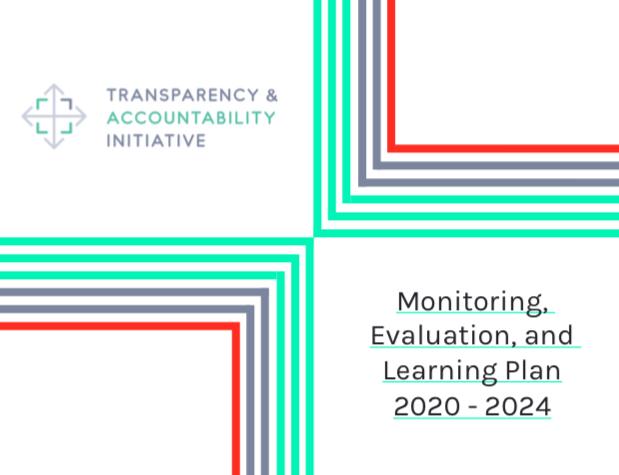Introducing TAI’s 2020-2024 Monitoring, Evaluation, and Learning Plan

Transparency and Accountability Initiative (TAI) serves as a platform for funder collaborative learning and action within and beyond our funder members. This year, we introduced a new five-year strategy that will guide our work until 2024. To accompany the strategy, we have developed a new Monitoring, Evaluation, and Learning (MEL) plan to help us capture insights, track and understand what is effective, what is not, and adapt along the way.
How did we develop the plan?
TAI funder members and the Secretariat staff participated in an Outcomes Working Group to design the MEL plan. Building on evidence and insights generated through TAI’s 2019 external evaluation, this plan reflects the why, what, and how of our MEL practices.
What’s different in this plan?
Reflecting efforts to put our own learnings into action, there are some key differences between the previous MEL plan and this one.
- Making the plan public
While the previous plan was used internally, we opted to publish this plan. This change mirrors our values and hopefully contributes to other funder and practitioner efforts to work and learn through networks or other collaborative initiatives.
- Clearer connection between TAI model of change and strategy
The MEL plan mirrors shifts in the strategy from broad thematic pillars to strategic outcome areas: “what we fund” (optimizing the impact of funding portfolios), “how we fund” (reinforcing effective grantmaker practice), and “funder landscape” (expanding and enhancing funder connections). This shift reflects our updated model of change based on the proposition that sustained collaboration feeds funder learning and action for improved transparency, participation, and accountability (TPA) outcomes.

- Greater emphasis on outcomes
Our previous strategy included clear and bold outcomes, but most were field-facing outcomes far removed from TAI’s actual work as a funder collaborative. This gap contributed to our MEL work, focusing heavily on tracking outputs rather than progress on these lofty outcomes.
The new strategy is based on clear and bold goals, providing a framework for our MEL work to have a greater emphasis on outcomes. We even have some new impact-level results and indicators. This will help us monitor and assess TAI’s progress and adapt our work across the strategy.
- The value of aligned reporting
We report to our funders on a semi-annual basis. The MEL plan is designed to facilitate aligned grant reporting across our members – encouraging joint reflection and a sense of collective progress and easing reporting demands on the TAI Secretariat. (Read about how our members seek to reduce reporting burdens on grantees in this collaboration case note.)
Unlike our previous plan, the aligned reporting indicators are explicitly included and connected to the strategy and a broader framework of collective learning questions.
- Don’t let it sit on the shelf
We’ve placed an intentional focus on “use” of the plan – both in data collected and/or provided by members (through such means as the Center of Effective Philanthropy aggregated grantee perception report results) and in how we share and use this data with members. We envision member funders will use the plan, as well as learnings and results captured, to inform their strategies and practices and collaboration with funder peers.
Encouraged by our funder members, we anticipate that our motto for the MEL plan development will hold true for its implementation: “keep things simple and carry on learning.”


